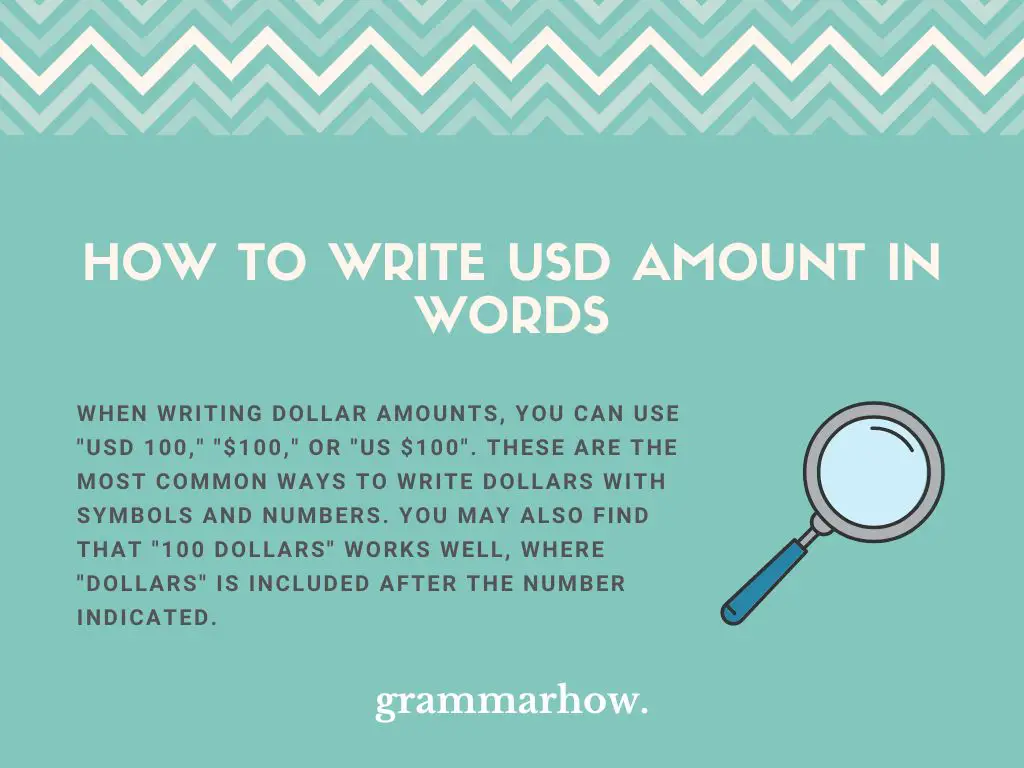
When you’re writing about dollars, there are a few different style formats you need to know about. This article will explore some of the ways you can include dollars or USD in your writing. We’ll touch on all the formal choices there are.
When writing dollar amounts, you can use “USD 100,” “$100,” or “US $100”. These are the most common ways to write dollars with symbols and numbers. You may also find that “100 dollars” works well, where “dollars” is included after the number indicated.

When it comes to writing dollars out like this, there are no specific rules that say one way works better than the other. Nothing mentions that some are more formal than others.
It’s mainly a stylistic choice. Some people would use “US $100,” while others would go for “$100 US.” It really depends on what you like more.
One rule that you must stick to is consistency. If you write dollars in one particular format, you should make sure to use that format every time afterward as well. Consistency will make it much clearer and more “professional” for the reader.
You can use the dollar sign in formal and informal writing. If you use it, you can use it like this “$100,” “US $100,” or “$100 US.” It’s up to you to determine which form looks the best for you. They all work well, and the dollar is clearly highlighted.
The dollar sign works in these situations:
You can use the dollar code (USD) before or after the value of dollars you’re using. It’s common for people to include “USD” after the monetary value informally or when talking about how much they have. It comes before in formal situations, like handling the stock market.
These examples will show you where the dollar code can go in your writing:
You can use “dollars” in your writing with either letters or numbers. It’s more stylistically appropriate to write out your numbers in the long form if you’re going to write dollars as well (i.e. “sixty dollars” rather than “60 dollars”).
There’s nothing wrong with using numbers with “dollars,” but it’s slightly more informal. You should only use it in this form when you’re dealing with particularly large or complicated numbers (like “1,345 dollars”).
Here are some examples to show you how to use the word:
You can write USD amounts in words with cents as well. Generally, you can follow all of the usual style formats. You just need to include a decimal place for the cent. That means “US $10.50,” “10.50 USD,” and “$10.50” all work well in your writing.
Just like before, it comes down to personal preference. It’s up to you to determine which form looks the best. You just have to make sure you stick to it when you decide on one of them.
If you use Canadian dollars, you have three main options. You can use the dollar sign (as long as you specify it’s Canadian with “CA”). You may use the dollar code (which is CAD). You can also use “Canadian dollars” if you’re writing the word out in the long form.
These examples will show you the best practices for Canadian dollars:
For Australian dollars, you can use the dollar sign with the code “AU” to make sure you’re establishing the currency. You may also use “AUD,” which is the dollar code for the Australian dollar. It’s possible to write “Australian dollar” in the long form as well.
Here are some examples to show you how Australian dollars work:
When writing dollars, you have many options. Most of them are stylistic choices. You can use “$10,” “US $10,” “$10 US,” “10 USD,” or “USD 10” if you want to stick with codes and symbols. You could also use “ten dollars” if you want to use the word.
Martin holds a Master’s degree in Finance and International Business. He has six years of experience in professional communication with clients, executives, and colleagues. Furthermore, he has teaching experience from Aarhus University. Martin has been featured as an expert in communication and teaching on Forbes and Shopify. Read more about Martin here.